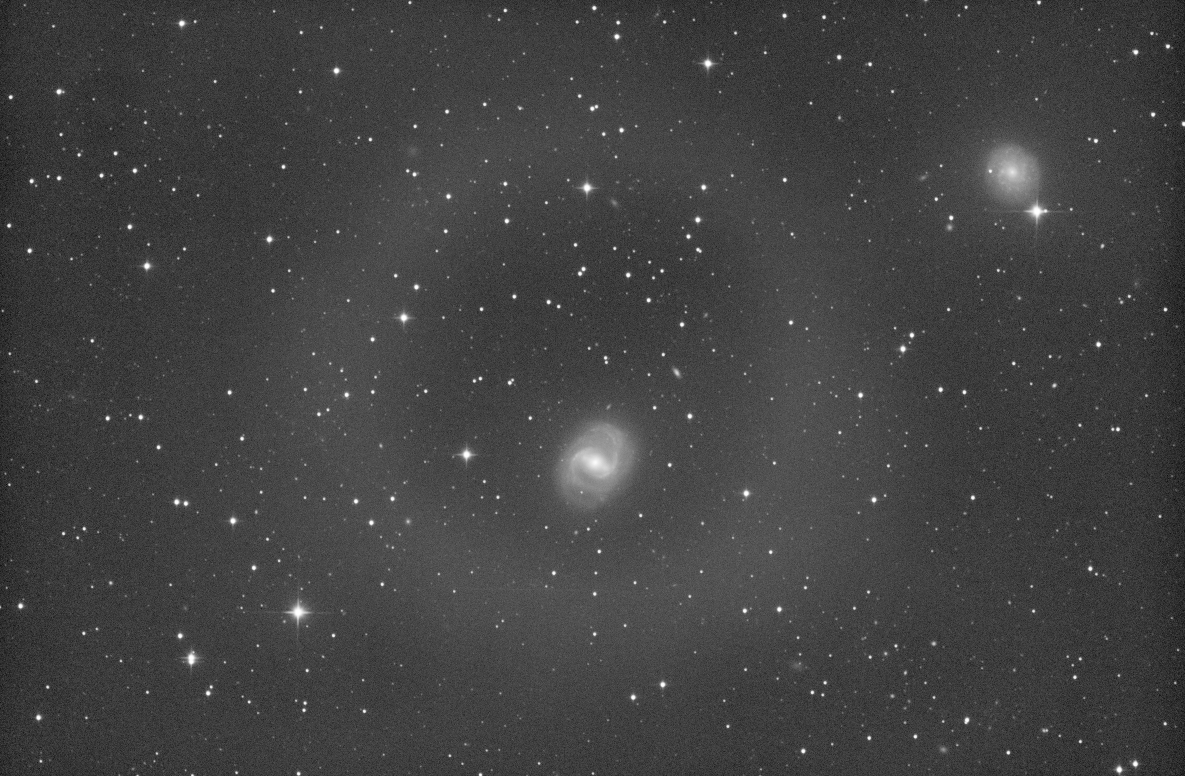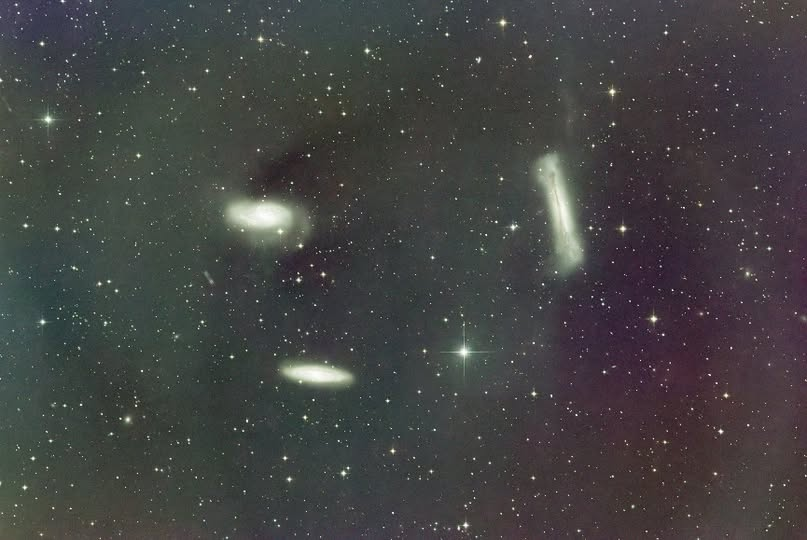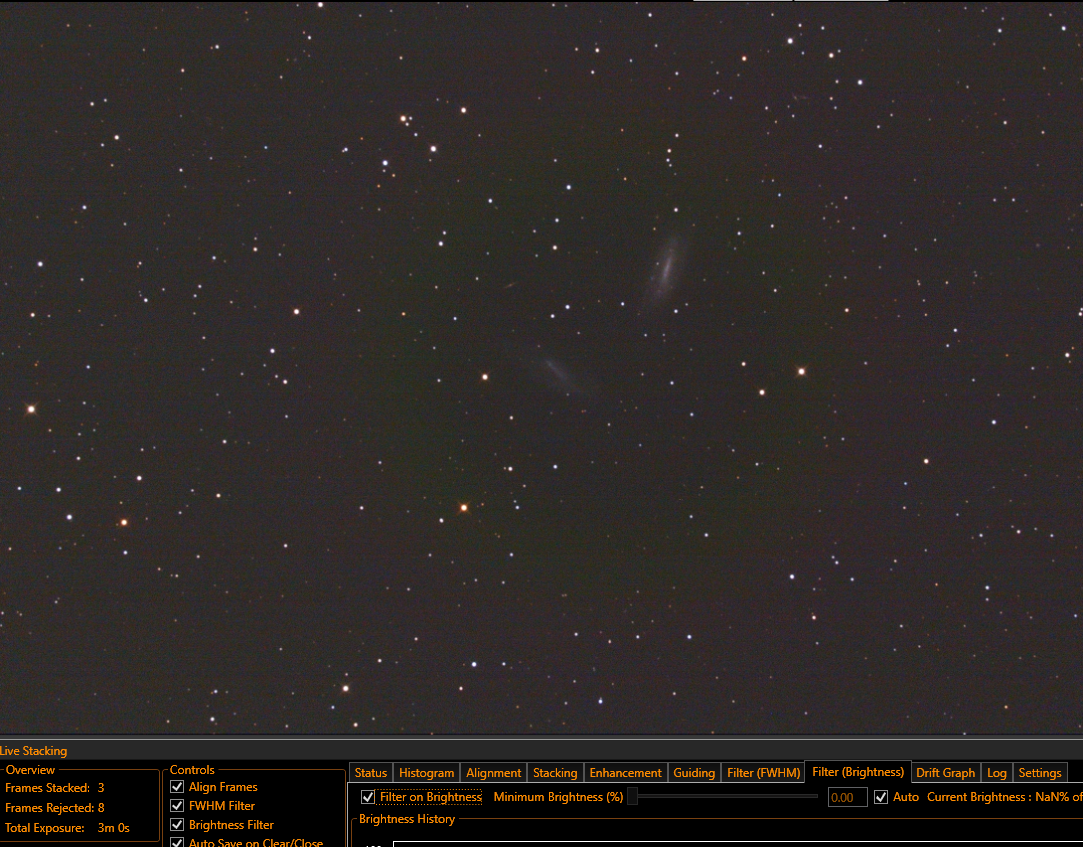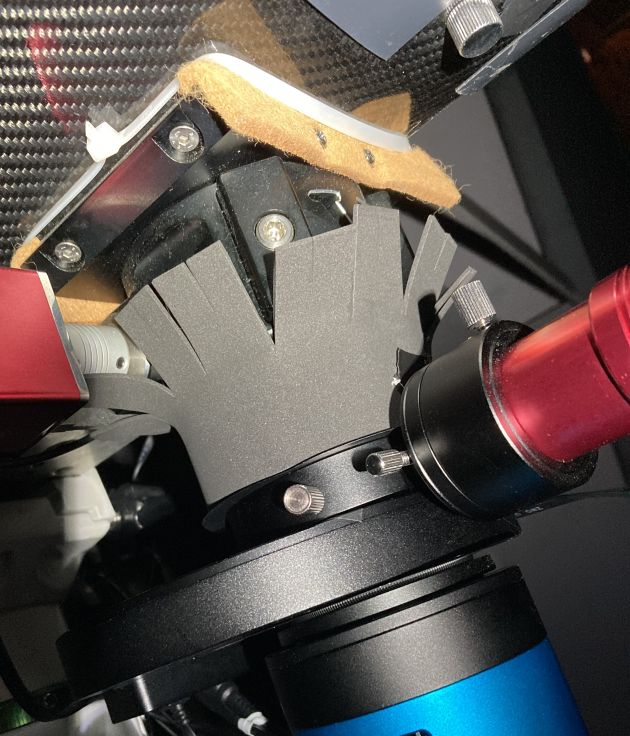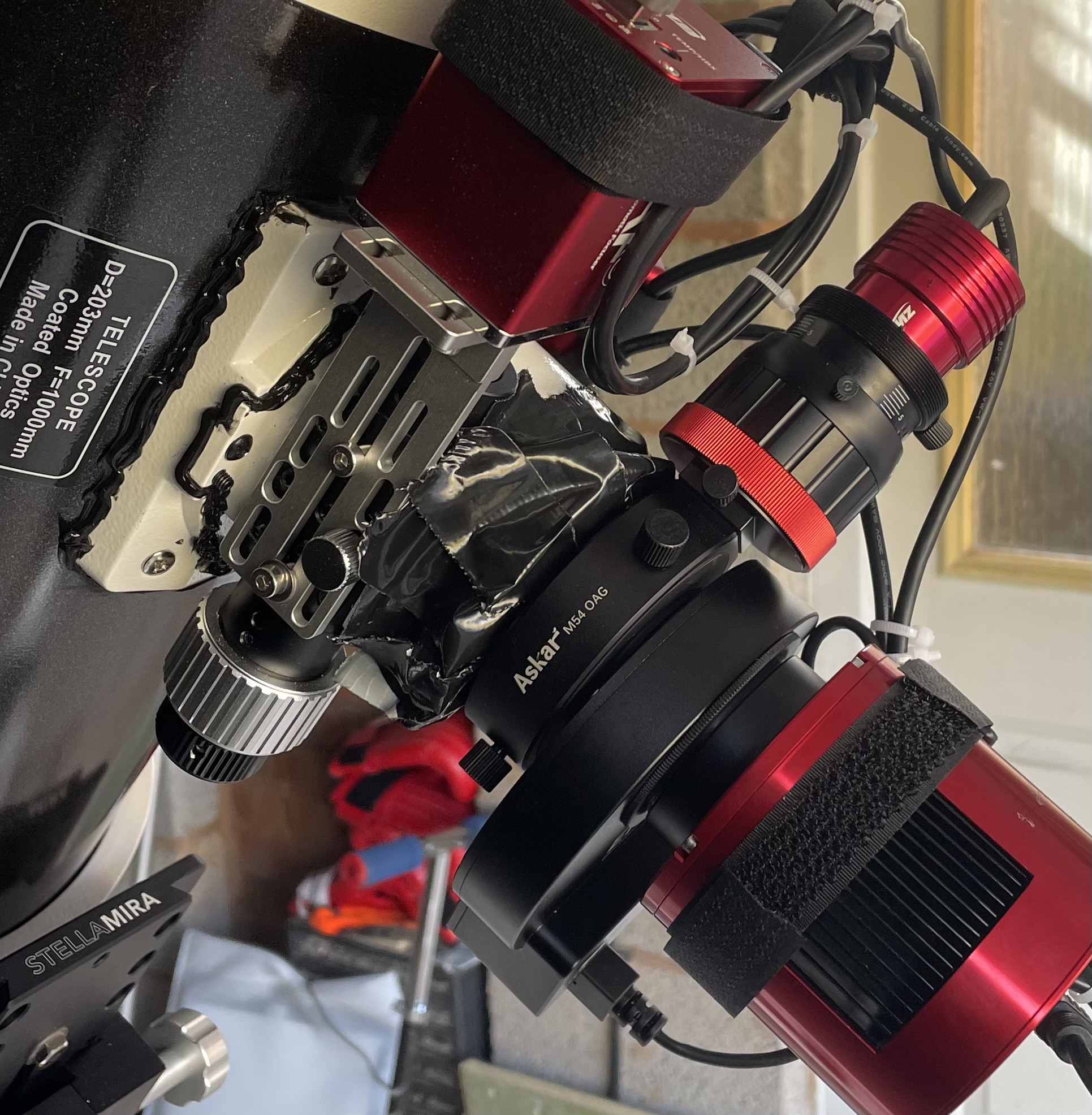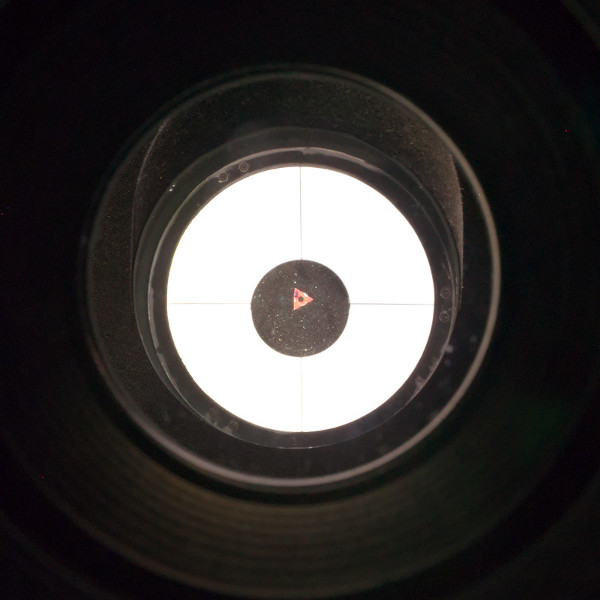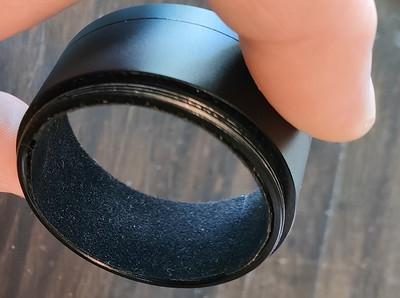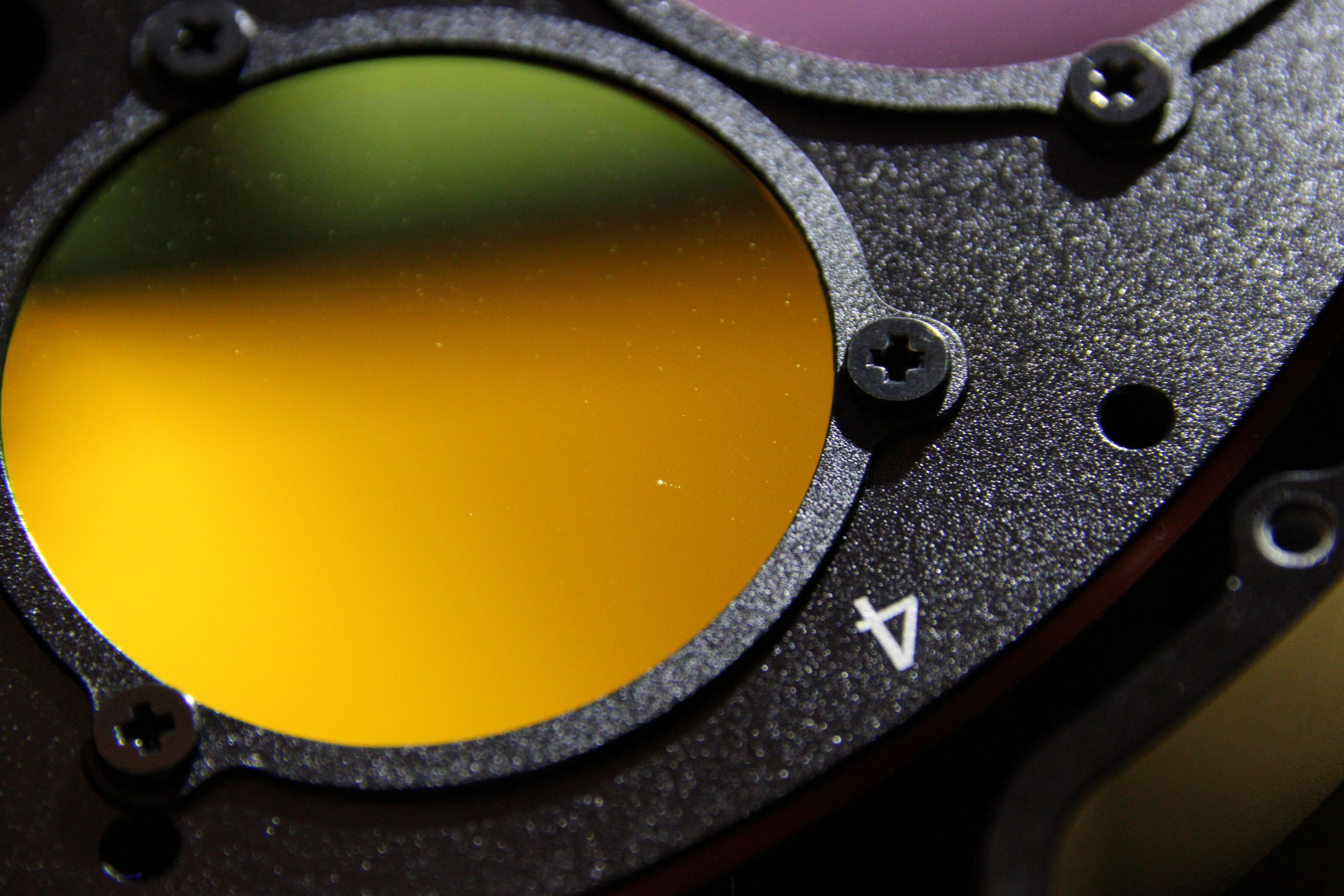Hi fellow astrophotographers
Even though the issue needs a serious overstretch of the background to become visible, I noticed that I have some wierd internal reflection pattern on images collected with broadband filters. I fear that this might limit my ability to get some fine background aspects out. Here is a particularely evident case :
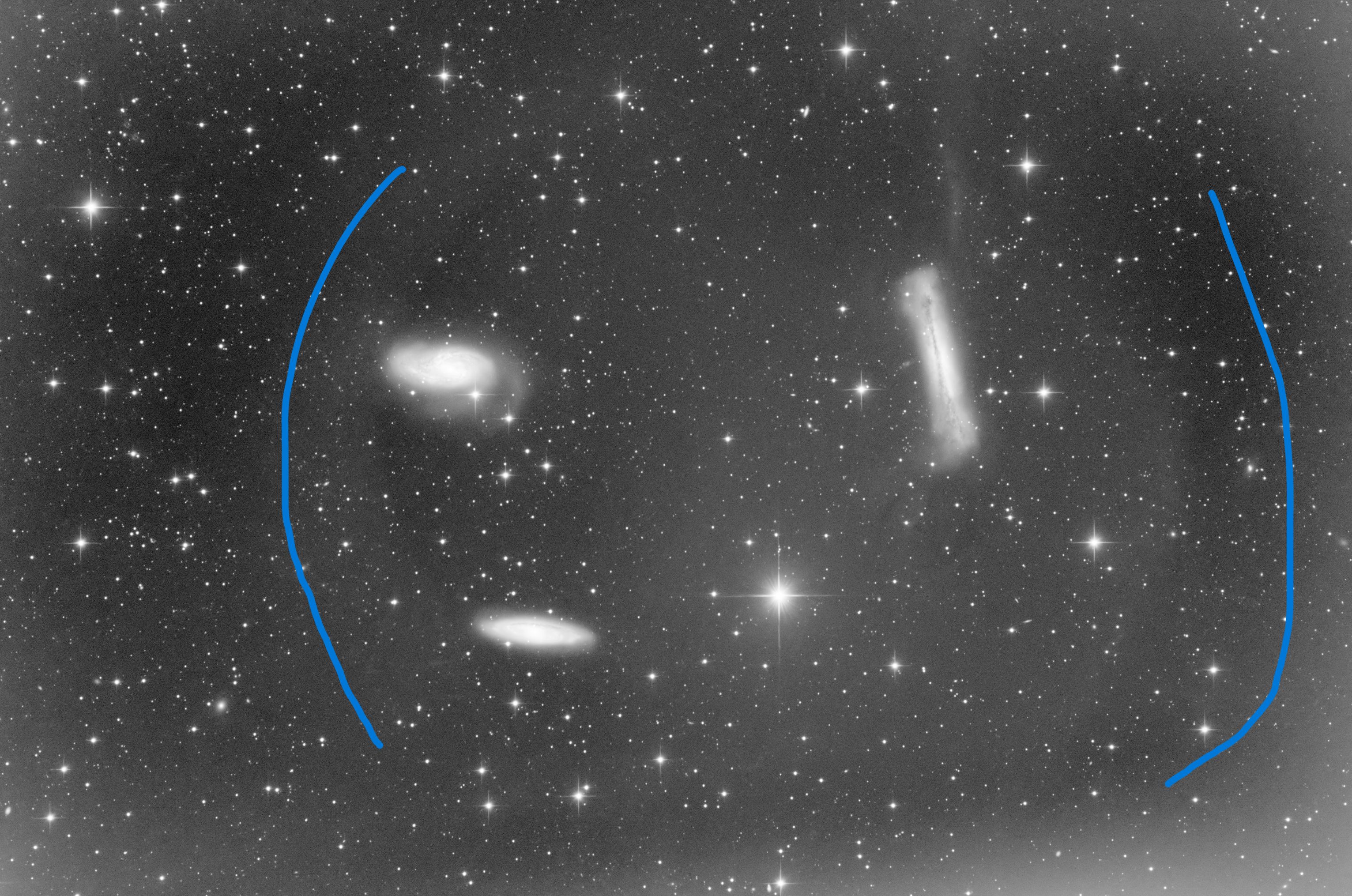
This a 2 hours stack of the luminance channel capture with my current mono setup. This one consists in a TS-Optics 200/800 UNC carbon newtonian with a dewshield, a coma corrector, an OAG, a Zwo filter weel, optolong filters and a touptek 2600m. My R, G and B channels exhibit the same issue but to a lesser extent. The Ha and Oiii don't. All data were collected over two nights with the same imaging plan in similar conditions. The master light files were simply stretched (manually using the histogram transformation), denoised and re-stretched up to an excessive point to highlight the issue. No gradient correction was applied. GraXpert solve everthing here but the two arcs.
Some observations :
- the two arcs might be due to the same reflexion in conjunction with the meridian flip.
- the issue is not systematic. Most of the time, broadband masters are fine.
- I used the same setup with an ASI294MC pro and a filter drawer but with a guide scope without never ever encountering this kind of reflexion.
Any hint would be much welcome.
CS
Patrice
Even though the issue needs a serious overstretch of the background to become visible, I noticed that I have some wierd internal reflection pattern on images collected with broadband filters. I fear that this might limit my ability to get some fine background aspects out. Here is a particularely evident case :

This a 2 hours stack of the luminance channel capture with my current mono setup. This one consists in a TS-Optics 200/800 UNC carbon newtonian with a dewshield, a coma corrector, an OAG, a Zwo filter weel, optolong filters and a touptek 2600m. My R, G and B channels exhibit the same issue but to a lesser extent. The Ha and Oiii don't. All data were collected over two nights with the same imaging plan in similar conditions. The master light files were simply stretched (manually using the histogram transformation), denoised and re-stretched up to an excessive point to highlight the issue. No gradient correction was applied. GraXpert solve everthing here but the two arcs.
Some observations :
- the two arcs might be due to the same reflexion in conjunction with the meridian flip.
- the issue is not systematic. Most of the time, broadband masters are fine.
- I used the same setup with an ASI294MC pro and a filter drawer but with a guide scope without never ever encountering this kind of reflexion.
Any hint would be much welcome.
CS
Patrice
